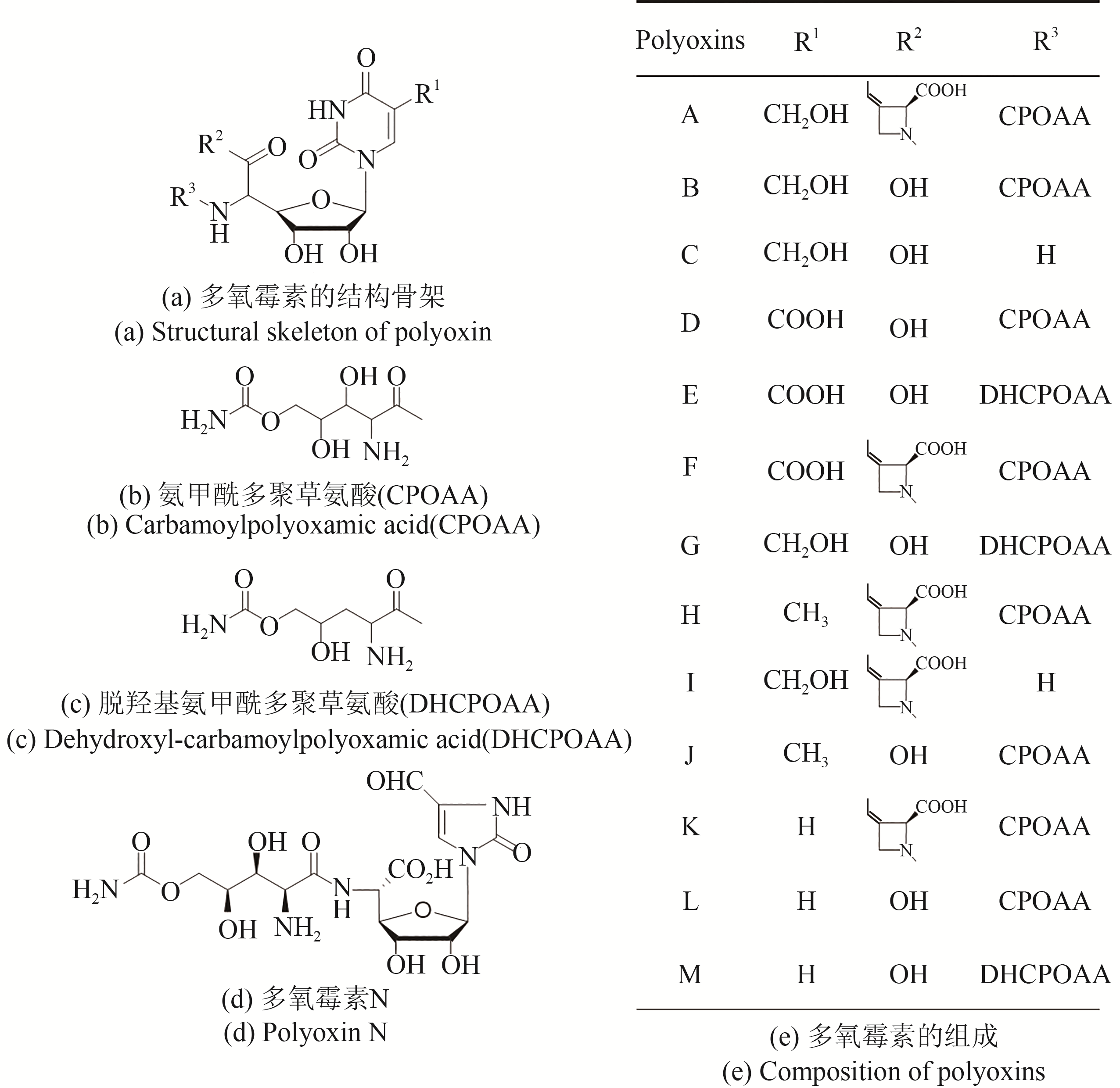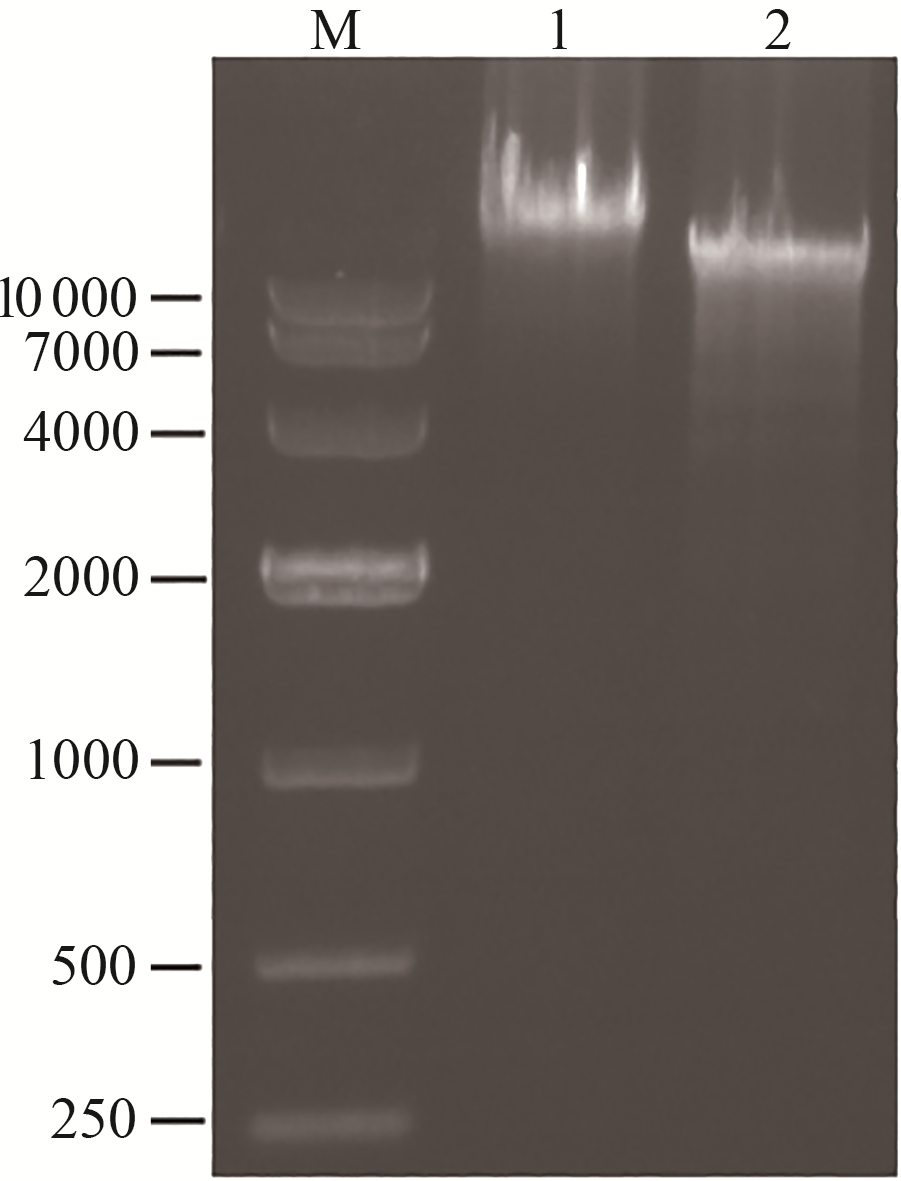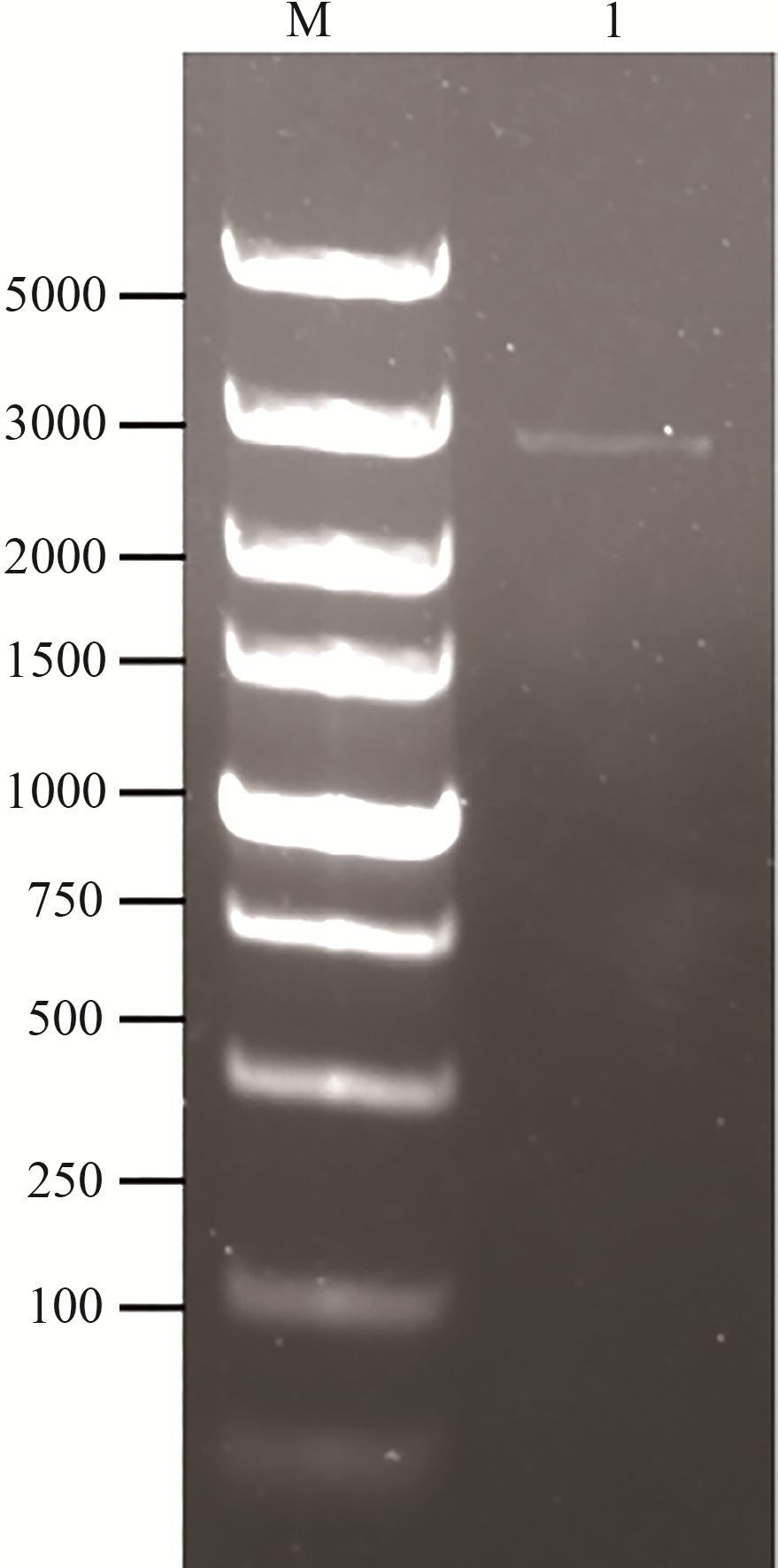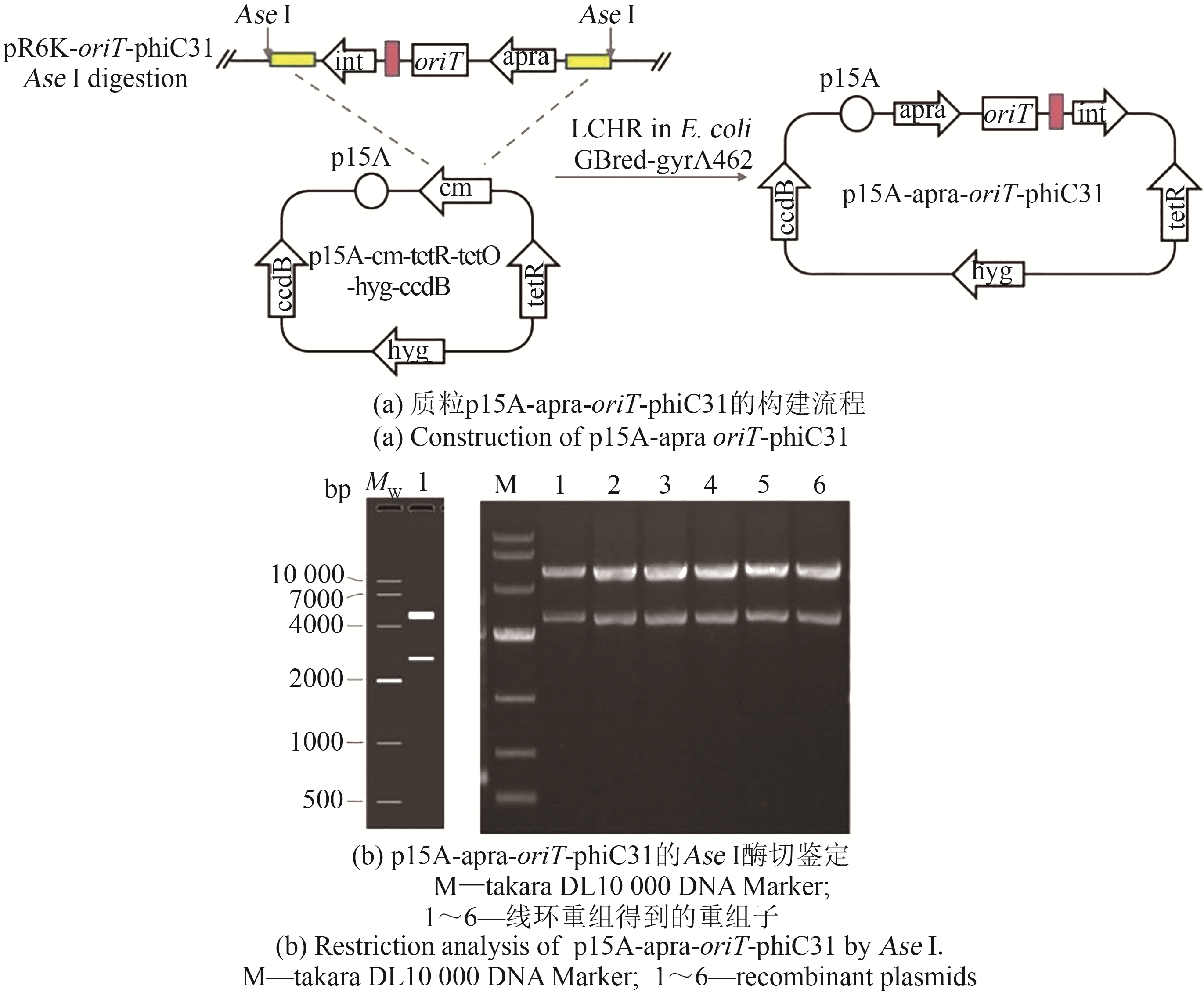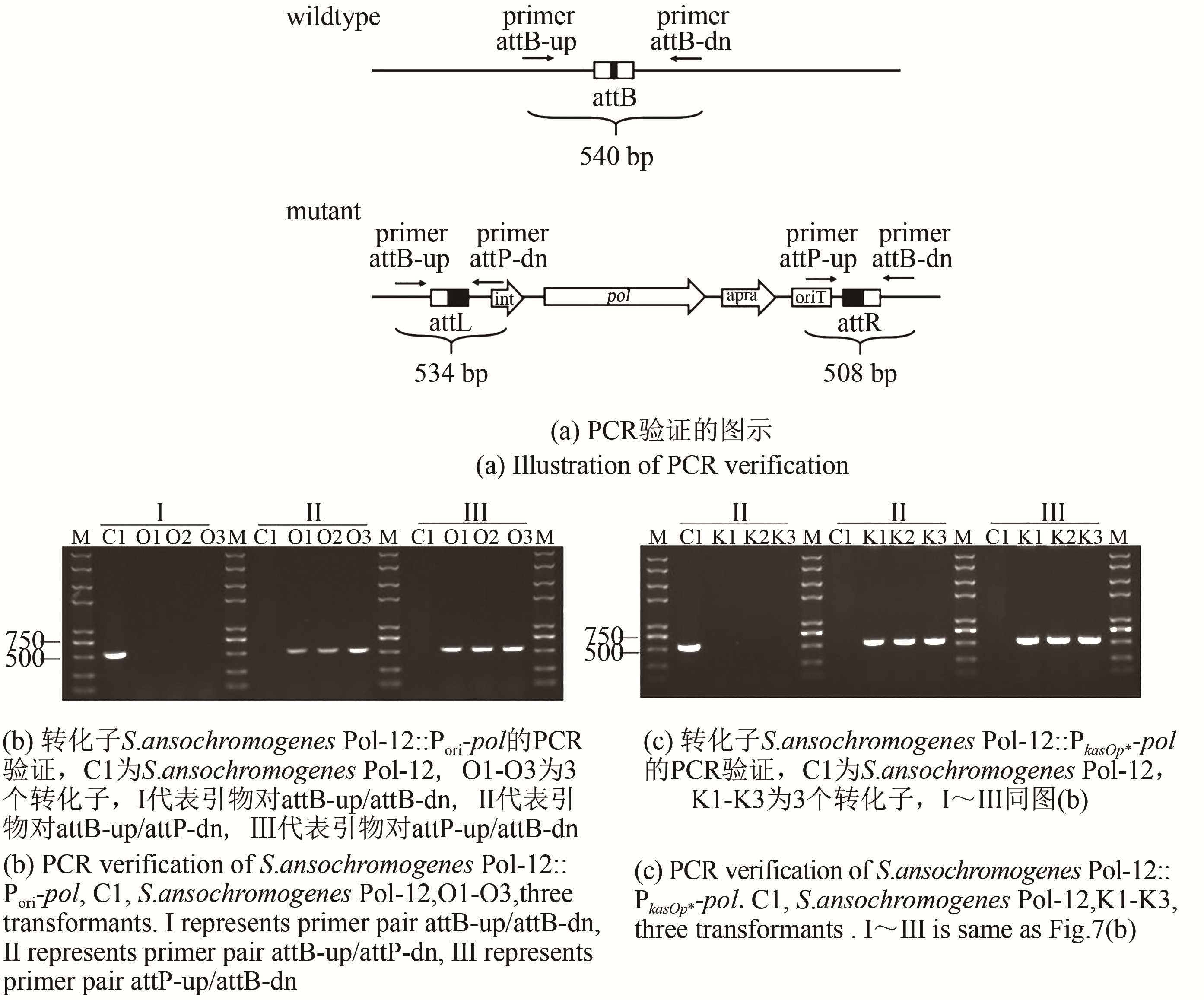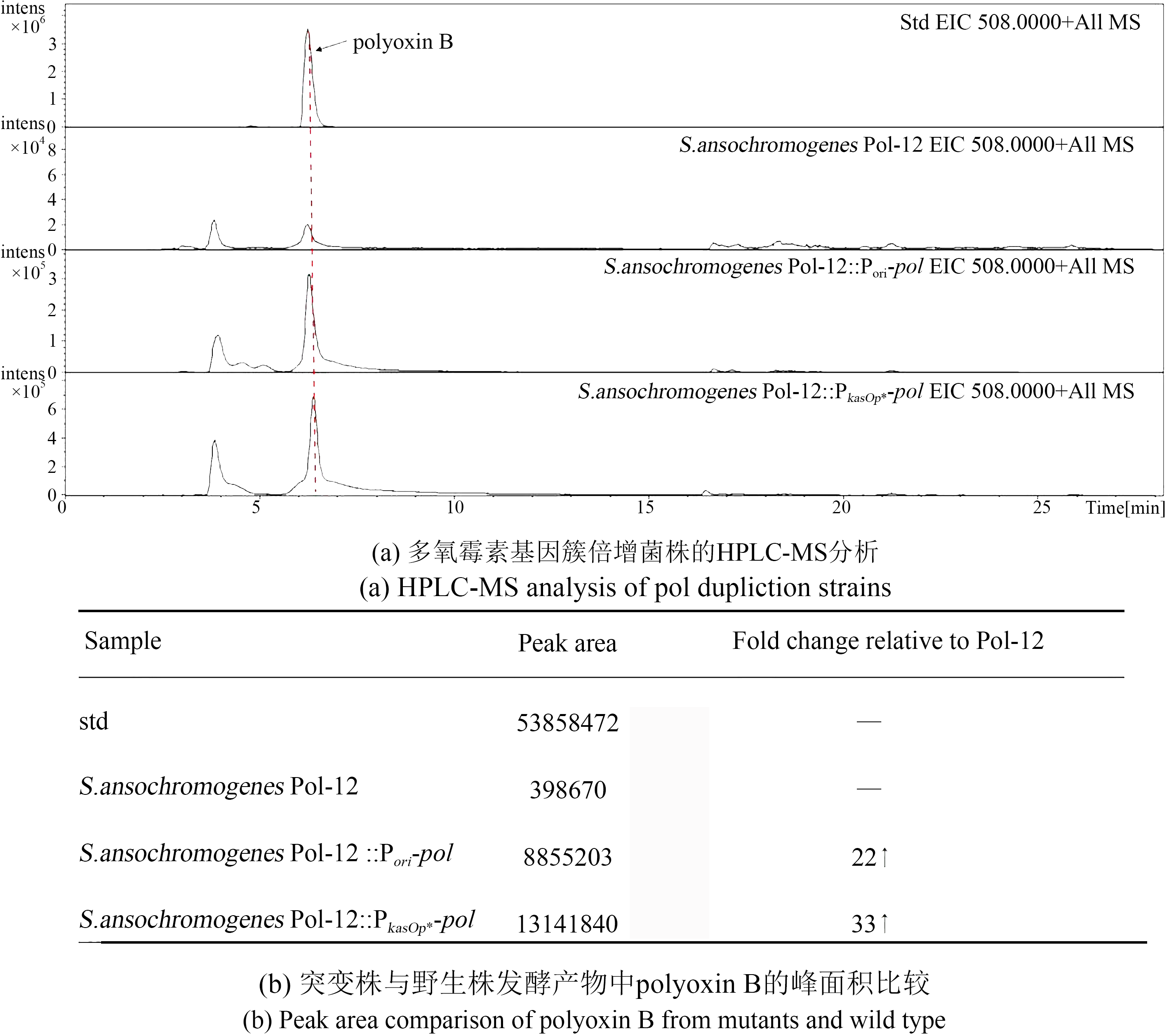| 1 |
SUZUKI S, ISONO K, NAGATSU J, et al. A new antibiotic, polyoxin A [J]. The Journal of Antibiotics, 1965, 18: 131.
|
| 2 |
沈寅初. 国内外农用抗生素研究和发展概况[J]. 中国抗生素杂志, 1981, 6(2): 57-64.
|
|
SHEN Yinchu. Research and development of agricultural antibiotics at home and abroad [J]. Chinese Journal of Antibiotics, 1981, 6(2): 57-64.
|
| 3 |
ISONO K, NAGATSU J, KAWASHIMA Y, et al. Studies on polyoxins, antifungal antibiotics (Ⅰ): Isolation and characterization of polyoxins A and B [J]. Agricultural and Biological Chemistry, 1965, 29(9): 848-854.
|
| 4 |
ENDO A, MISATO T. Polyoxin D, a competitive inhibitor of UDP-N-acetylglucosamine: chitin N-acetylglucosaminyltransferase in Neurospora crassa [J]. Biochemical and Biophysical Research Communications, 1969, 37(4): 718-722.
|
| 5 |
ISONO K, NAGATSU J, KOBINATA K, et al. Studies on polyoxins, antifungal antibiotics (Ⅴ): Isolation and characterization of Polyoxins C, D, E, F, G, H and I [J]. Agricultural and Biological Chemistry, 1967, 31(2): 190-199.
|
| 6 |
ISONO K, ASAHI K, SUZUKI S. Polyoxins, antifungal antibiotics (ⅩⅢ): Structure of polyoxins [J]. Journal of the American Chemical Society, 1969, 91(26): 7490-7505.
|
| 7 |
ISONO K, SUZUKI S. The polyoxins: pyrimidine nucleoside peptide antibiotics inhibiting fungal cell wall biosynthesis [J]. Heterocycles, 1979, 13(1): 333-351.
|
| 8 |
URAMOTO M, UZAWA J, SUZUKI S, et al. Isolation and structure of polyoxin N [J]. Nucleic Acids Research, 1978, 5(s2): s327-s332.
|
| 9 |
ISONO K. Nucleoside antibiotics: structure, biological activity, and biosynthesis [J]. The Journal of Antibiotics, 1988, 41(12): 1711-1739.
|
| 10 |
ISONO K, SATO T, HIRASAWA K, et al. Biosynthesis of the nucleoside skeleton of polyoxins [J]. Journal of the American Chemical Society, 1978, 100(12): 3937-3939.
|
| 11 |
ISONO K, FUNAYAMA S, SUHADOLNIK R J. Biosynthesis of the polyoxins, nucleoside peptide antibiotics. new metabolic role for L-isoleucine as a precursor for 3-ethylidene-L-azetidine-2-carboxylic acid (polyoximic acid) [J]. Biochemistry, 1975, 14(13): 2992-2996.
|
| 12 |
FUNAYAMA S, ISONO K. Biosynthesis of the polyoxins, nucleoside peptide antibiotics: biosynthetic pathway for 5-O-carbamoyl-2-amino-2-deoxy-L-xylonic acid (carbamoylpolyoxamic acid) [J]. Biochemistry, 1977, 16(14): 3121-3127.
|
| 13 |
CHEN Wenqing, HUANG Tingting, HE Xinyi, et al. Characterization of the polyoxin biosynthetic gene cluster from Streptomyces cacaoi and engineered production of polyoxin H [J]. Journal of Biological Chemistry, 2009, 284(16): 10627-10638.
|
| 14 |
CHEN Wenqing, DAI Daofeng, WANG Changchun, et al. Genetic dissection of the polyoxin building block-carbamoylpolyoxamic acid biosynthesis revealing the "pathway redundancy" in metabolic networks [J]. Microbial Cell Factories, 2013, 12(1): 121.
|
| 15 |
LI Rui, XIE Zhoujie, TIAN Yuqing, et al. polR, a pathway-specific transcriptional regulatory gene, positively controls polyoxin biosynthesis in Streptomyces cacaoi subsp. asoensis [J]. Microbiology, 2009, 155(6): 1819-1831.
|
| 16 |
LI Rui, LIU Gang, XIE Zhoujie, et al. PolY, a transcriptional regulator with ATPase activity, directly activates transcription of polR in polyoxin biosynthesis in Streptomyces cacaoi [J]. Molecular Microbiology, 2010, 75(2): 349-364.
|
| 17 |
中国科学院生命科学与生物技术局编著. 2012工业生物技术发展报告[M]. 6版. 北京: 科学出版社, 2012: 117-128.
|
|
Bureau of Life Science and Biotechnology, Chinese Academy of Sciences. 2012 Report on the development of industrial biotechnology [M]. 6th ed. Beijing: Science Press, 2012: 117-128.
|
| 18 |
YANAI K, MURAKAMI T, BIBB M. Amplification of the entire kanamycin biosynthetic gene cluster during empirical strain improvement of Streptomyces kanamyceticus [J]. Proceedings of the National Academy of Sciences of the United States of America, 2006, 103(25): 9661-9666.
|
| 19 |
MURAKAMI T, SUMIDA N, BIBB M, et al. ZouA, a putative relaxase, is essential for DNA amplification in Streptomyces kanamyceticus [J]. Journal of Bacteriology, 193(8): 1815-1822.
|
| 20 |
MURAKAMI T, BURIAN J, YANAI K, et al. A system for the targeted amplification of bacterial gene clusters multiplies antibiotic yield in Streptomyces coelicolor [J]. Proceedings of the National Academy of Sciences of the United States of America, 108(38): 16020-16025.
|
| 21 |
LI Lei, WEI Keke, LIU Xiaocao, et al. aMSGE: advanced multiplex site-specific genome engineering with orthogonal modular recombinases in actinomycetes [J]. Metabolic Engineering, 2018, 52(2019): 153-167
|
| 22 |
ZHANG Youming, BUCHHOLZ F, MUYRERS J P P, et al. A new logic for DNA engineering using recombination in Escherichia coli [J]. Nature Genetics, 1998, 20(2): 123.
|
| 23 |
ZHANG Youming, MUYRERS J P P, TESTA G, et al. DNA cloning by homologous recombination in Escherichia coli [J]. Nature Biotechnology, 2000, 18(12): 1314.
|
| 24 |
FU Jun, BIAN Xiaoying, HU Shengbaio, et al. Full-length RecE enhances linear-linear homologous recombination and facilitates direct cloning for bioprospecting [J]. Nature Biotechnology, 2012, 30(5): 440.
|
| 25 |
WANG Hailong, LI Zhen, JIA Ruonan, et al. ExoCET: exonuclease in vitro assembly combined with RecET recombination for highly efficient direct DNA cloning from complex genomes [J]. Nucleic Acids Research, 2017, 46(5): e28-e28.
|
| 26 |
ONGLEY S E, BIAN Xiaoying, ZHANG Youming, et al. High-titer heterologous production in E. coli of lyngbyatoxin, a protein kinase C activator from an uncultured marine cyanobacterium [J]. ACS Chemical Biology, 2013, 8(9): 1888-1893.
|
| 27 |
BIAN Xiaoying, HUANG Fan, WANG Hailong, et al. Heterologous production of glidobactins/luminmycins in Escherichia coli nissle containing the glidobactin biosynthetic gene cluster from Burkholderia DSM7029 [J]. ChemBioChem, 2014, 15(15): 2221-2224.
|
| 28 |
KIESER T, BIBB M J, BUTTNER M J, et al. Practical streptomyces genetics [M]. 2nd ed. Norwich: John Innes Foundation, 2000: 169-170.
|
| 29 |
LI Jine, LI Lei, TIAN Yuqing, et al. Hybrid antibiotics with the nikkomycin nucleoside and polyoxin peptidyl moieties [J]. Metabolic Engineering, 2011, 13(3): 336-344.
|
| 30 |
LI Jine, LI Lei, FENG Chi, et al. Novel polyoxins generated by heterologously expressing polyoxin biosynthetic gene cluster in the sanN inactivated mutant of Streptomyces ansochromogenes [J]. Microbial Cell Factories, 2012, 11(1): 135.
|
| 31 |
ZHAI Lipeng, LIN Shuangjun, QU Dongjing, et al. Engineering of an industrial polyoxin producer for the rational production of hybrid peptidyl nucleoside antibiotics [J]. Metabolic Engineering, 2012, 14(4): 388-393.
|
| 32 |
QI Jianzhao, LIU Jin, WAN Dan, et al. Metabolic engineering of an industrial polyoxin producer for the targeted overproduction of designer nucleoside antibiotics [J]. Biotechnology and Bioengineering, 2015, 112(9): 1865-1871.
|
|
通讯作者:作者简介:李盛英(1978—),男,博士,教授。研究方向为合成生物学,微生物学及生物化学。
|
 ), 杜磊1,2, 徐晓庆3, 丁金鹏3, 张伟1, 李盛英1(
), 杜磊1,2, 徐晓庆3, 丁金鹏3, 张伟1, 李盛英1( )
)
 ), DU Lei1,2, XU Xiaoqing3, DING Jinpeng3, ZHANG Wei1, LI Shengying1(
), DU Lei1,2, XU Xiaoqing3, DING Jinpeng3, ZHANG Wei1, LI Shengying1( )
)
